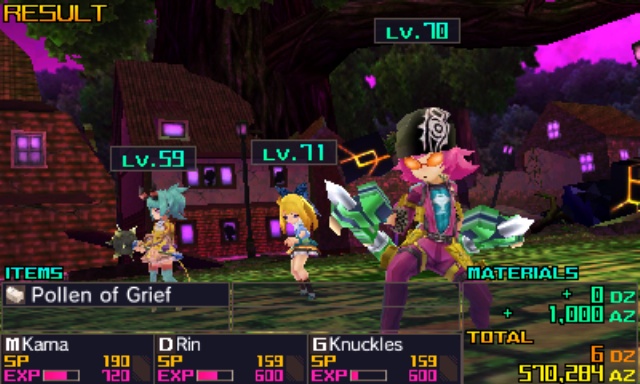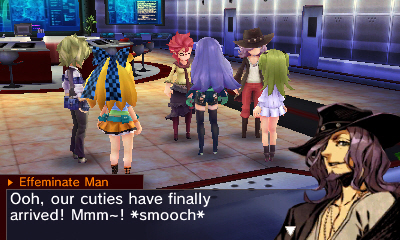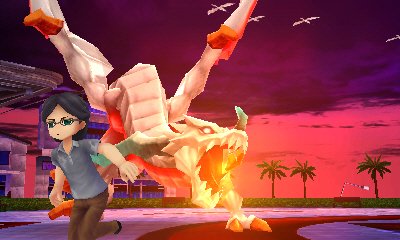Review by Pierre-Yves L.
Almost a century ago humanity was brought to near extinction by an invasion of dragons. The powerful Unit 13 managed to defeat them, and peace was restored and humanity was allowed to rebuild itself over time. Peace, however, is never meant to last and one of the most powerful beings known as the 7th True Dragon is awaking in order to finish what was started. Put in charge of a newly minted Unit 13, it’s up to you to stop it.
As previously noted back in late May, 7th Dragon III Code VFD is the third title in the series, however it is the first to be localised outside of Japan. At first this did feel like it would be a bit of an issue as there were moments in which contextual information felt like it was missing. I’m happy to say that this feeling disappears in time as everything is explained fully. Not necessarily in the order you’d expect, but you’ll get there. Even if it hadn’t, 7th Dragon Code: VFD is well worth diving into.
7th Dragon places players into the role of a customised silent protagonist who will become the leader of the aforementioned Unit 13. In fact all the characters that “join up” are customised and just as silent. This takes some getting used to at first – though it was common enough for JRPG heroes to be featureless avatars back in the day, we’re used to them having personalities now. Thankfully, the support cast makes up for it and on the plus side, the customisation allows for a player complete freedom in how they approach their adventure.
Classes are anything but standard compared to what one would expect. Each has a variety of skills that can offer significantly different approaches to battle plans. For example, the Agent can hide and ambush with her dual-pistols, slow enemies down by targeting the knees (a bullet to the knee sure outshines an arrow to the knee), and finally mind-hack an enemy to use them against their allies while also making them susceptible to different elemental damages. That’s just one class. While you may be in a troop of just three heroes in this game, more than this maximum can be created and be put onto standby in order to be used later on, so there’s plenty of room to experiment and be creative.
Later the combinations become even more nuanced. First, the newly minted Unit 13 gets the authorisation to increase the size of its squad allowing for the party to grow to six, and then to nine characters forming three separate parties to take into the field. This also unlocks new portraits and new classes each time offering up more variety. Only the main party is allowed to be used in battle but the two others are shown on the lower screen and are anything but useless as they gain experience at the same rate and can be swapped through the menu when not in battle.
Upping the ante, Dragons are not going to go down easily and will start pulling out some rather dirty moves from massive attacks to supreme defensive stances. As encounters are calculated in turns, each class has a set amount of turns in order to store up a three bar meter in order to provide assistance to the main group. Once at least one of these bars have been filled then the character can offer support, such as increasing attack and defence to healing and resurrection. Two bars of this support meter can be expended to open up the real tactical options up, as they can be used to break a Dragon from using a powerful move or reopen them to attack.
If there would be a downside to all of this combat it would be that 7th Dragon does require some grinding, as the sidequests are not enough to keep the player party on the same power escalation curve as the enemies. Worse, the side quests that this game offers generally belong to the “fetching items” and “slaying monsters” varieties. Worse is that in certain cases these require significant backtracking to then claim the rewards.
It’s not all bad, though. Through the hours of 7th Dragon the effort that has been put in is clear to see. There aren’t that many locations to visit, but each location has several sub-sections that change things up and simply beg to be uncovered. Additionally, as part of the game’s backtracking, each of these places have areas can only be discovered on subsequent visits, as they open up as time passes, offering new sites and enemies to combat.
The musical composition originally stood out to me having some rather upbeat and lively tracks that were hard to put down. Even after having gone twenty hours in, these, and newer tracks, continued to hold my attention and made even the longer dungeon crawl sections flow nicely. What made this better was that the background exploration music is never halted and then restarted from having entered a battle. Instead these tracks simply pick back up from where they left off with smooth transitions that never have that quick “cut off” that can be jarring after one time too many.
Finally, 7th Dragon visually has a lot going on and in the first few hours which could be a bit much for the 3DS to handle, though New 3DS users can expect a smoother experience. During this time the framerate could crumble under the detail in the environment. Once past the beginning segments this steadies off as environments aren’t quite as visually busy with moving elements. This isn’t to say that there are less details, there are simply less movement flowing around allowing for a smoother overall visual experience.
7th Dragon III Code: VFD is a stellar RPG with classic JRPG tropes through its narrative and complex, nuanced, battle system. Even with some of the issues that mean it might only be for JRPG fans – especially the dungeon crawling monotony, this is, nonetheless, yet another feather for the JRPG cap for the Nintendo 3DS, and represents yet another reason to settle in with your 3DS for dozens of hours of fantasy fun.
– Pierre-Yves L.
Contributor











